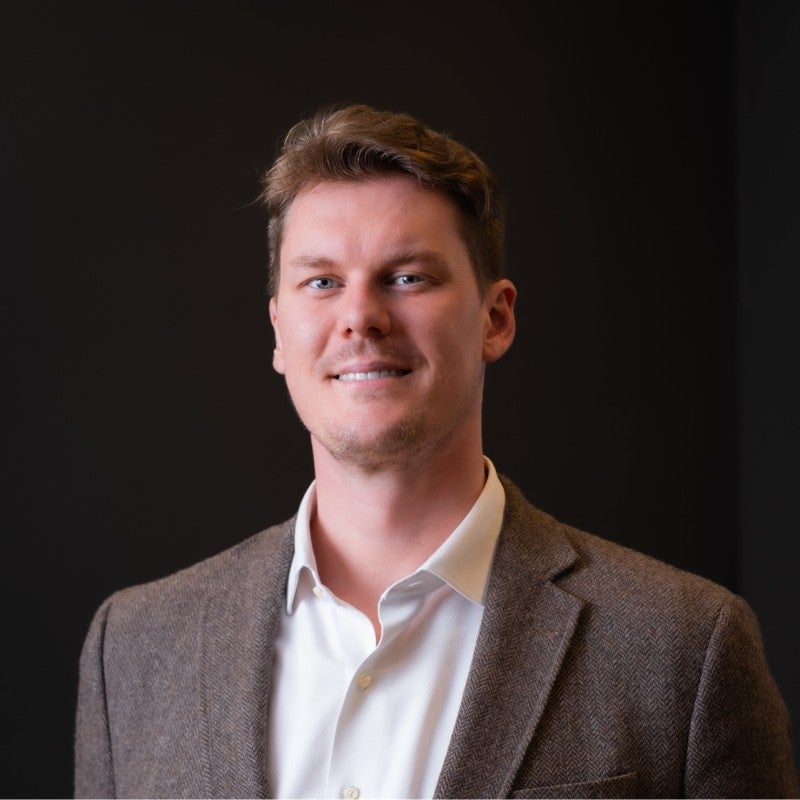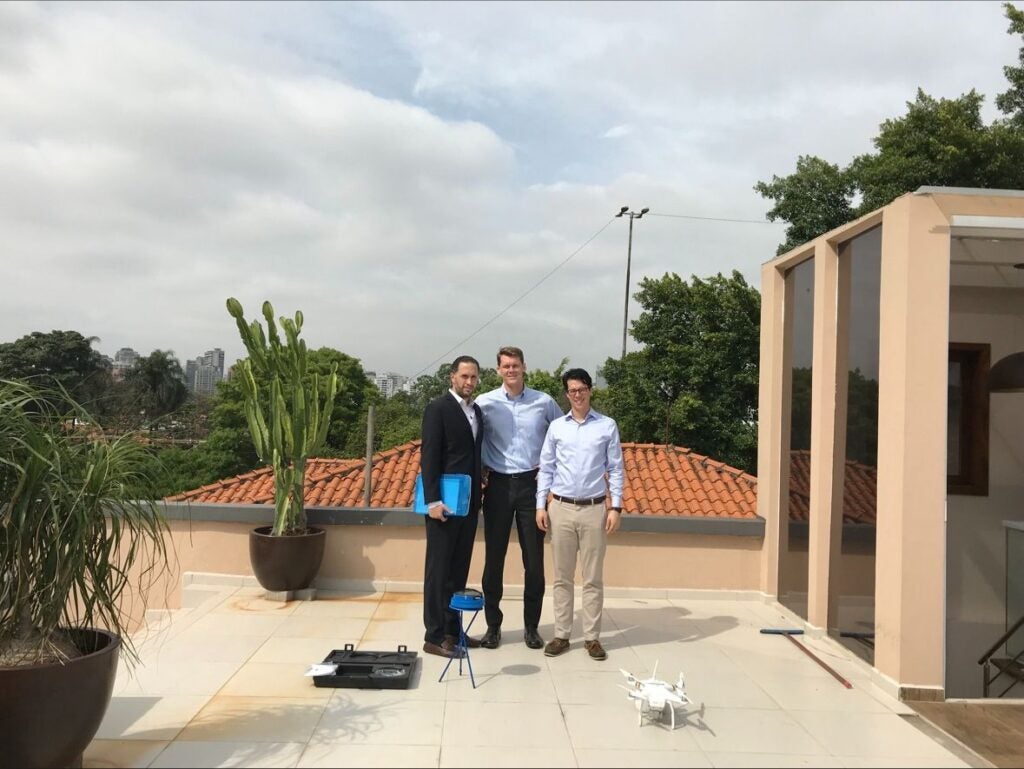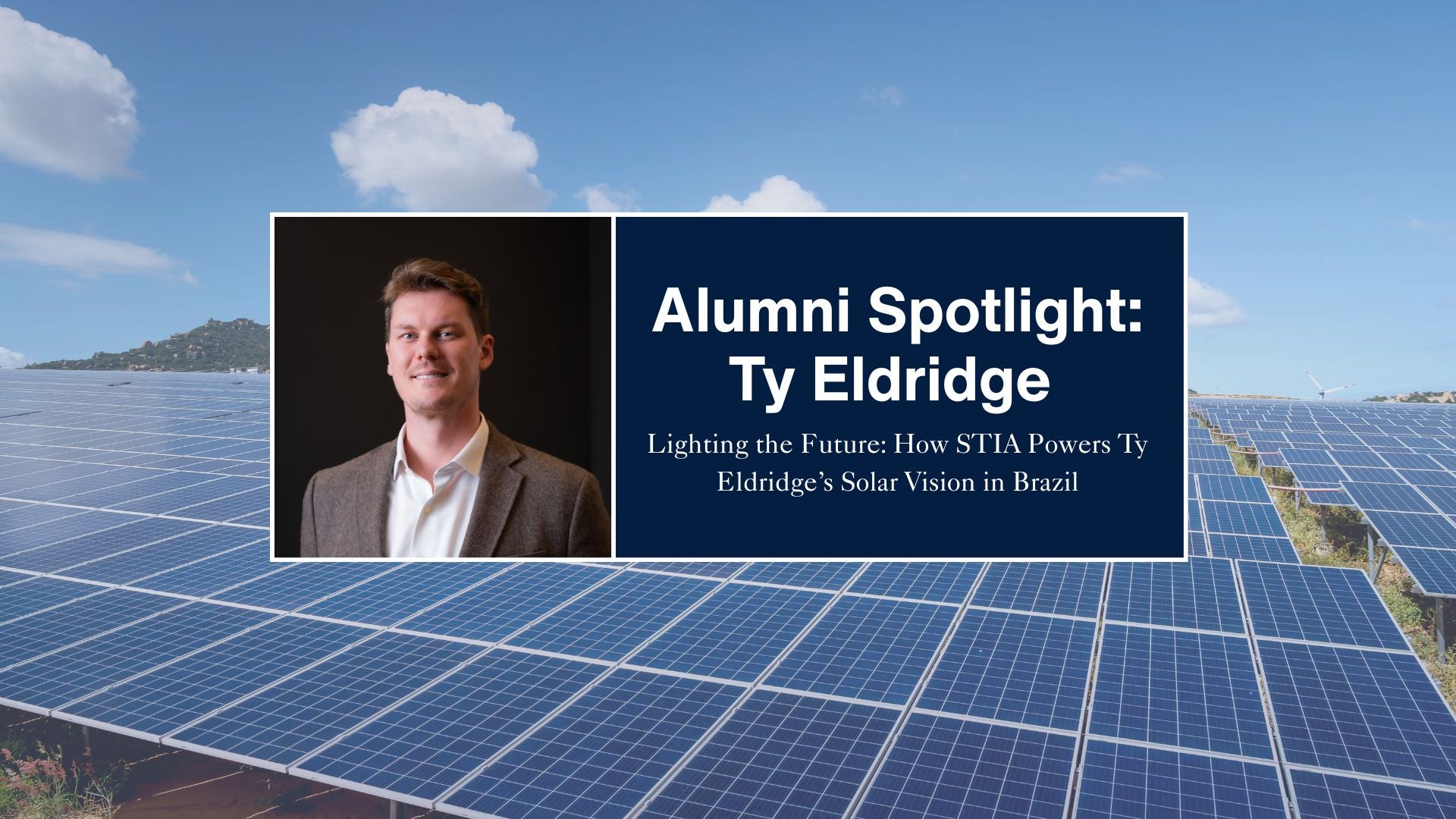Lighting the Future: How STIA Powers Ty Eldridge’s Solar Vision in Brazil

Ty Eldridge
STIA lessons at work every single day
In São Paulo, Brazil, Ty Eldridge (SFS ’13) starts most mornings with the same spark he first discovered at Georgetown: curiosity. As CEO and co-founder of Brasol, a distributed solar and modern energy company operating hundreds of assets across every Brazilian state, Eldridge says the way he approaches his work—asking better questions, finding hidden connections, and embracing complexity—comes directly from his years in the STIA program. “Curiosity and things that are new,” he says. “That’s the through-line. Every day there’s an opportunity to learn, and STIA taught me how fun learning can be.”
That interdisciplinary habit of mind is more than just a nice philosophy. It is a core leadership skill in the fast-moving energy sector. Navigating Brazil’s evolving policies, structuring partnerships with international investors, and integrating new energy technologies all require what Eldridge calls “seeing the system.”
Finding complexity in the everyday
That ability to see systems was sharpened in unexpected places at Georgetown. In our gateway course, STIA 305 with Professor Chuck Weiss, for example, a reading on the global journey of McDonald’s French fries became, in his words, “forty of the most interesting pages I’ve read.” It wasn’t the potatoes that fascinated him. It was the realization that even something as ordinary as a French fry is the product of vast, interlinked systems of technology, trade, regulation, and culture.
“That class taught me to see the complexity in everyday systems,” Eldridge recalls. “It’s exactly how I look at energy today.”
Partnerships that last beyond the Hilltop
STIA also shaped his network in ways that would prove life-changing. In that same class, Eldridge sat next to a fellow student, David Betancur Gomez (COL ’11), who would later become his co-founder in Brazil. He says. It is a reminder that in STIA, partnerships often start in the classroom but extend far beyond it. “STIA attracts people who are curious and engaged, and that’s a huge asset,” Eldridge said. “You never know which of your classmates you’ll end up working with years down the line.”

Pictured from left to right: Jorge Tamariz, Ty Eldridge (SFS ’13), and David Betancur Gomez (COL ’11)
Work and wonder in the field
If the classroom honed his systems thinking, the fieldwork gave him a taste for real-world problem-solving in wildly different contexts. Under the guidance of former STIA Professor and Director Tim Beach, “a mentor and advisor for my four years in undergrad,” Eldridge studied subglacial lakes in Iceland and excavated Mayan ruins in Belize.
“Just two very different worlds,” he says. “They opened my eyes to the possibility of work and wonder.” Moving from icy research stations to ancient archeological sites taught him to adapt quickly, learn on the fly, and stay curious no matter how unfamiliar the environment. These are skills he draws on daily while leading teams across Brazil’s diverse regions.
Connecting global investment to local opportunity
That adaptability became essential when Brasol scaled nationwide, and later when it attracted major international investment. In 2023, BlackRock’s Climate Finance Partnership and Siemens committed to support the company’s expansion into brownfield solar assets and emerging energy technologies. Eldridge sees that as the natural continuation of what STIA trained him to do: connect global resources to local opportunities.
“Everything I’ve done has been about connecting global investment to local opportunities in distributed energy, in emerging markets,” he says.
A degree that is still in use
Looking back, Eldridge does not view his degree as just a stepping-stone to his career. He describes it more like the operating system he still runs on. From a French fry supply chain in a Georgetown classroom to managing solar grids across Brazil, the through-line has been the same: understand the systems, stay curious, and never stop connecting the dots.
“STIA didn’t just give me knowledge,” he says. “It gave me the way I learn, the way I see the world—and that’s what I use every single day.”
Advice for future STIA students
When asked what current students should take from his path, Eldridge doesn’t hesitate: explore widely. “Don’t just stick to what you know,” he says. “Take classes that make you uncomfortable, dig into topics you’ve never heard of, and talk to professors about their work.”
He credits STIA for giving him the confidence to walk into a room of engineers or financiers and contribute meaningfully in both. “The value of STIA is that you learn how to speak multiple languages—technical, political, cultural. That’s rare, and it’s what makes you useful in the real world.”
